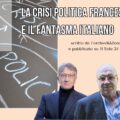Every three years, the OECD—the Organization for Economic Development and Cooperation, a 34-member club of the most industrialized nations with market economies—conducts a study to evaluate the competence of students across the globe. The PISA test (Programme for International Student Assessment) examines 500,000 15-year-old students in 65 countries, classifying them based on three subjects: math, science, and literacy. The most recent results published in December 2013, were surprising for many reasons, and raise questions that go beyond the boundaries of statistical work. Do the rankings definitely validate the East’s dominance? Do the tests correctly represent the universe they are trying to typify? Did China manipulate the tests to excel and reinforce national pride? The results don’t leave any doubts: Asia students’ preparation is far superior to even the richest nations. The best students are from Shanghai, then Singapore, Hong Kong, Korea, Taiwan, South Korea, Macao, and Japan. Italy is among the last places, the US is among the median for OECD countries, and even Finland—envied for its egalitarian, free and efficient scholastic system—is losing places. The revelations are essentially confirmed in the three articulations of the scrutinized subjects as well. The classification reflects the economic history of post-WWII East Asia. There’s the Japanese giant, the 4 tigers, the five Chinese, and the Red Dragon’s unstoppable rise. It’s tempting to conclude that almond-shaped eyes coincide with the best brains. The results certainly reflect growing economies, but also the desire for redemption, the tenacity of application, and the discipline of effort. It seems like the west is saturated and sick of studying, cradled in its comfort, while the parents’ generation and children who insist on instruction tend to social and material improvement. There is no shortage of criticism: mandatory application does not favor creativity; coerced study doesn’t liberate energy and promotes stress and depression. The best type of learning is self motivated. There are sites like mathblog.com which encourage this type of learning for example, which is not the case in Asia. Although they are reasonable appraisals, they don’t undermine the overall value of Asia’s performance. The other two observations are probably more appropriate. The representative ability of the national sample has been called into question, as is frequently the case when simplifying reality. Local authorities were asked to collaborate in selecting students, eventually substituting, and guaranteeing the students’ minimum presence. The prestige that fuels nationalism causes one to believe that each country has an interest in choosing the best students for the test, treating it like an Olympiad. Important commentators have voiced reasonable doubts concerning China, like those featured in Time Magazine and the South China Morning Post, Hong Kong’s most famous newspaper. The questions—which frequently take the form of hefty accusations—concern not only the flexibility involved with selection criteria, but also the choice of Shanghai. The metropolis was actually chosen to represent all of China, and OECD’s acceptance of the selection did not lack for criticism. Shanghai is in fact one of the richest cities in China, with one of the highest levels of schooling and greater exposure to other cultures. Its inhabitants spend much more than the national average to ensure their children attend the best schools offering the most prestigious professors in order to ensure the most luminous careers. Flaunting Shanghai’s ranking as a victory for all of China and its academic system therefore appears excessive and dense with propaganda. Instead, Asia’s comprehensive success remains intact, celebrated with indisputable superiority from other capitals. It’s another sign of a redistribution of global assets; a phenomenon so important that it doesn’t need the facts stretched or even suspected manipulations.
















